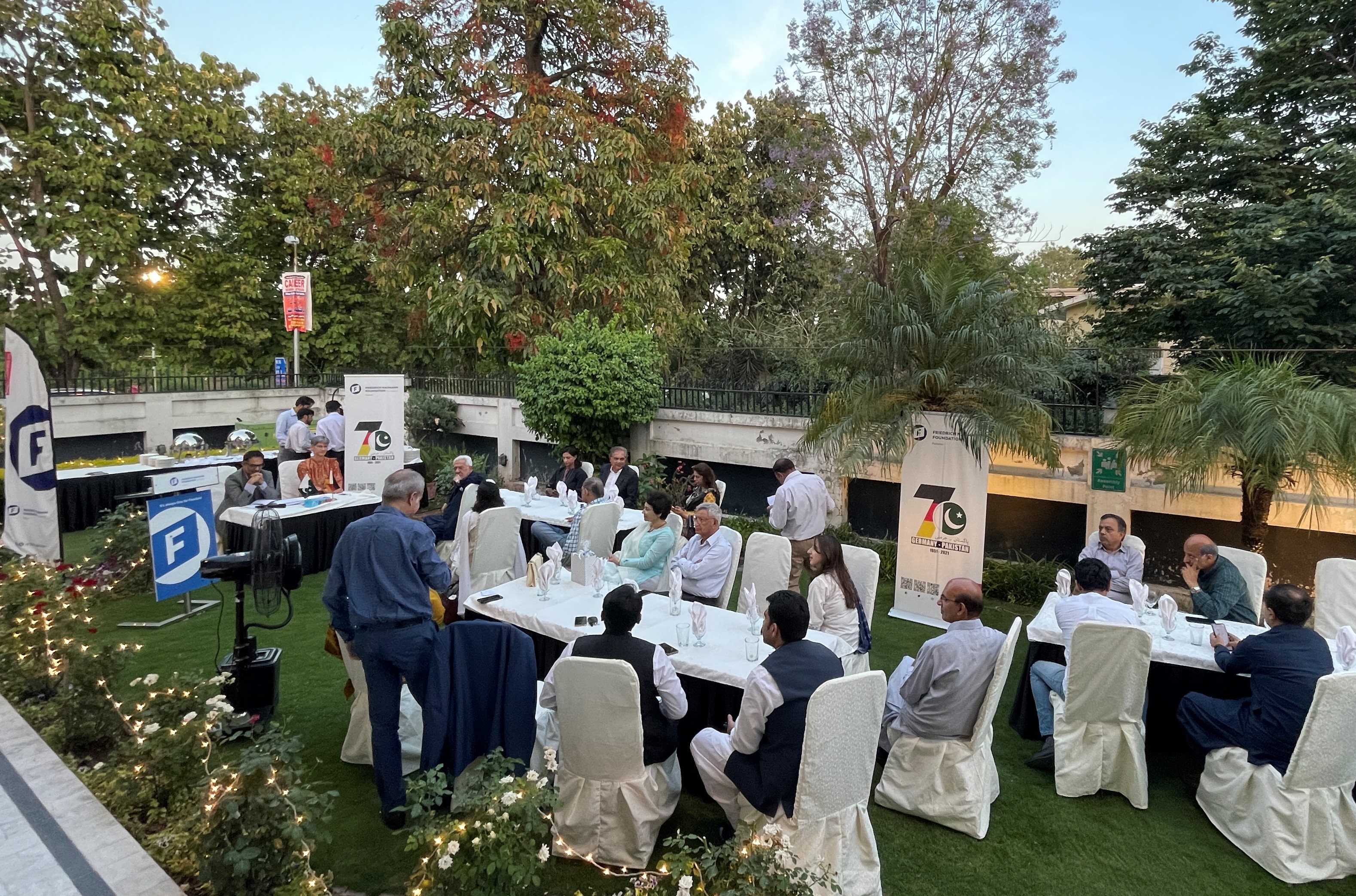Pakistan
Pakistan’s Economy: Where we are today and what we need to do?

Thought Bites: Taking the Pakistani Economy Forward- Iftar Dinner 27 April,2022 Islamabad
© Friedrich Naumann Foundation for Freedom PakistanIn terms of economics, where we are today and what we need to do?
I will divide my today’s talk in four parts. First, I will discuss macro-economic situation. Second, I will talk about growth. Third, I will discuss reforms. And finally, I will talk about transformation.
Macro Economic Situation
Broadly speaking, we see that our current account deficit has once again ballooned. From a high level of $20 billion in 2018 to a remarkable surplus in 2020, and a deficit of $13 billion once again in 2022. This level of current account deficit is unsustainable as it puts pressure on the exchange rate, which then contributes to devaluation and inflation. As the country does not have sufficient dollars to mature its international obligations, it is forced to access international lenders. Another problematic macro-economic indicator is spiralling inflation which has gone to 12.70%. It is reducing the purchasing power of a vast majority of households.
Growth
The growth figures, at least on face value, are not bad. The country is expected to post a growth rate of 6% this fiscal year. However once again, this has been triggered by consumption, and not by investment and productive capacity. We have encouraged flow of capital to unproductive economic sectors like real estate. Our traditional manufacturing sector is still caught in outdated methods of production. While Pakistan gained from greater access during the covid pandemic, this window is now closed as the world is moving to normalization. We remain trapped in growth boom and bust cycle.
In the long run, transformation requires a new industrial strategy and a connected national skills development strategy
Reforms
Reforms are our favourite topic as economists. We want to do structural reforms which means, for example, changing state ownership with private ownership or tariff liberalization. In the last couple of years, the government took some far-reaching measures.
- One notable example is the autonomy of the State Bank of Pakistan (SBP). The central bank has been made autonomous in setting up monetary policies and has been made responsible for price stability exclusively.
- We also saw tariff reduction in hundreds of industrial imports, which were unfortunately nullified by imposing additional custom duties and regulatory duties.
- In the tax administration, there were no structural reforms, but technology was used to facilitate taxpayers.
These reforms, though well-intended, are inconsequential in our economy. SBP autonomy is not helping to stabilize prices as there were other measures- namely concessionary lending- which are having expansionary effect. Also, production and trade constraints coupled with the historically high prices of international commodities, are minimizing the role of monetary policy.
Transformations: What we need to do?
Economic crises can be a blessing in disguise. They force all of us to take, and accept, difficult decisions without exhausting political capital. IMF programme is a similar blessing if adopted with seriousness, that is largely missing. Economic crisis can lead to transformation through a handful of policies, both short-term and long-term.
In the short term, we need to liberalize prices instead of imposing price controls. Price controls are being administered both directly and indirectly through the use of restrictions on imports and exports. Trade policy can be transformed in the short to medium term.
Instead of offering tax exemption or tax credits to IT sector (which is an example of old industrial policy), we can achieve better outcomes by investing in IT related skills
We need to stop using tariffs, additional custom duties and regulatory duties as source of revenue. We are not only hurting our businesses, which have to pay heavily upfront, but also consumers, who have to pay for dearer imports. We can introduce a low-rate, flat, and revenue neutral tariff rate for all goods instead of discrimination of one on another.
In the long run, transformation requires a new industrial strategy and a connected national skills development strategy. New industrial strategy does not pick winners and losers, but rather offers incentives like R&D, market linkages, and access to all competitive firms in any sector. Upgradation of skills is a necessary component.
A clear example of an under-powered sector is Information Technology, for which public and private sectors are not producing enough trained graduates. Instead of offering tax exemption or tax credits to IT sector (which is an example of old industrial policy), we can achieve better outcomes by investing in IT related skills, where the private sector is lacking. Any firm, inside or outside Pakistan, can benefit from a better trained IT workforce.
To break away from the consistent macro-economic challenges, unsustainable growth episodes and inconsequential reforms, we need to break away from the old to new vision. This is the vision of economic transformation, that Pakistan ought to debate and adopt.
Author’s Note: This is based on my informal talk at FNF Pakistan Iftar reception organized on 27th April 2022.
